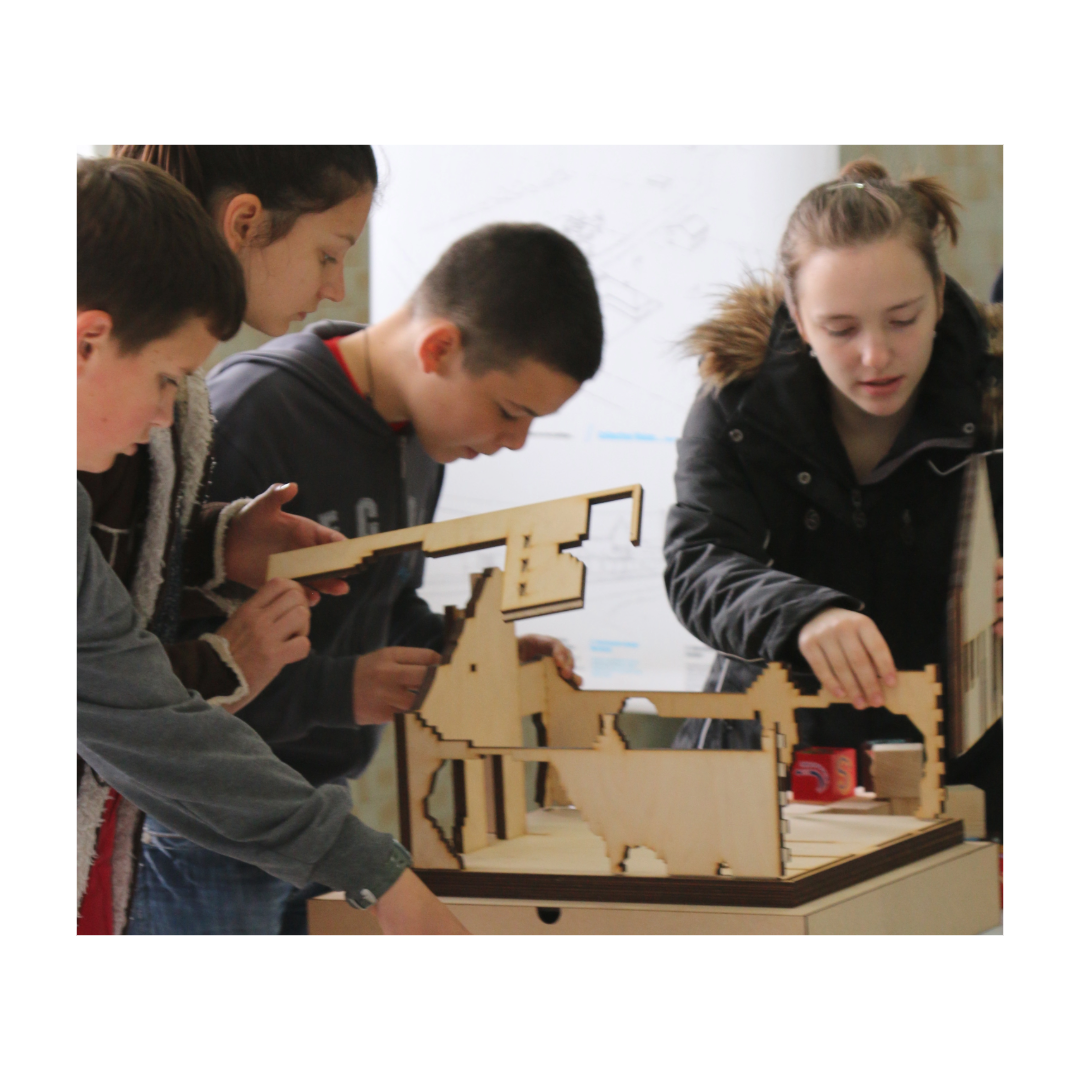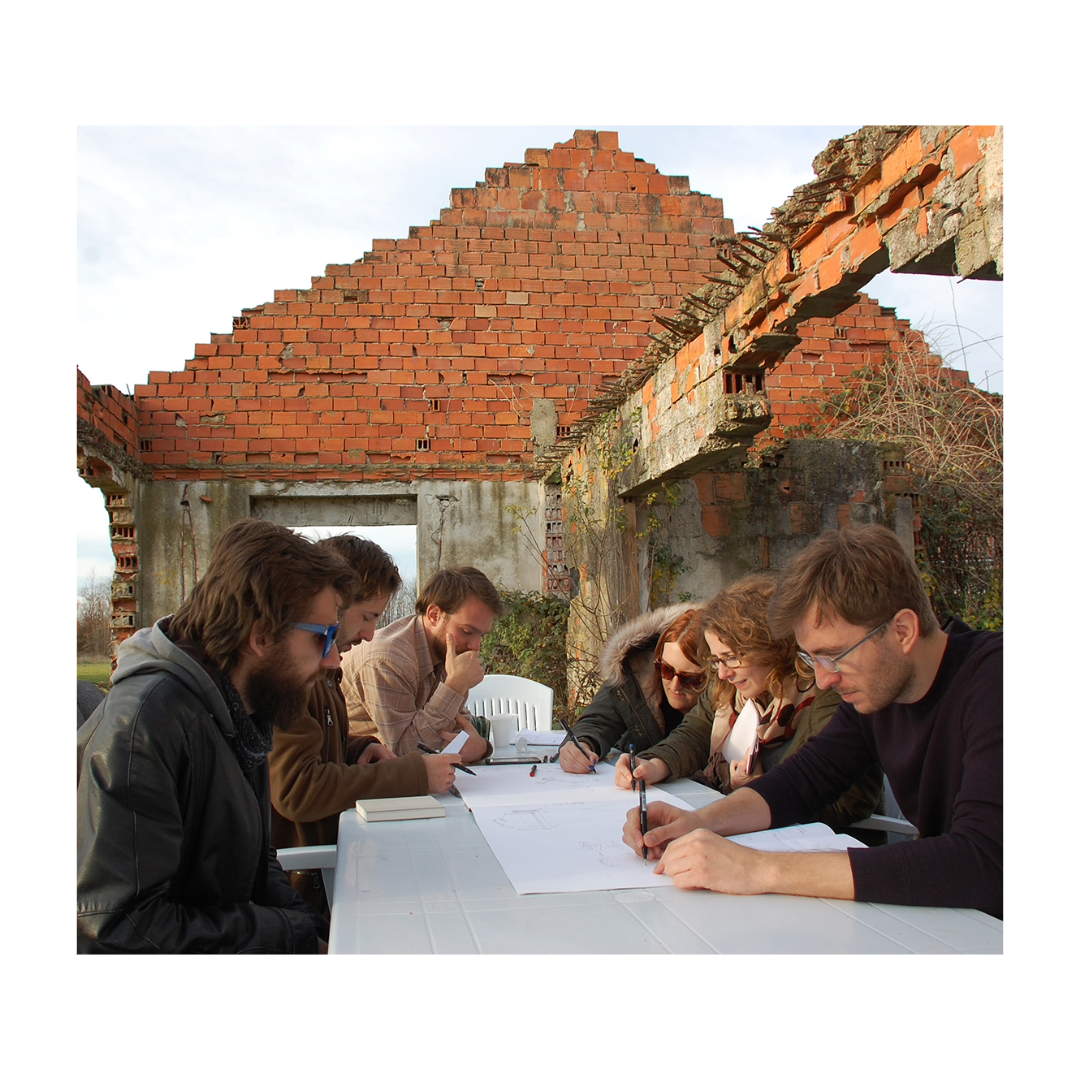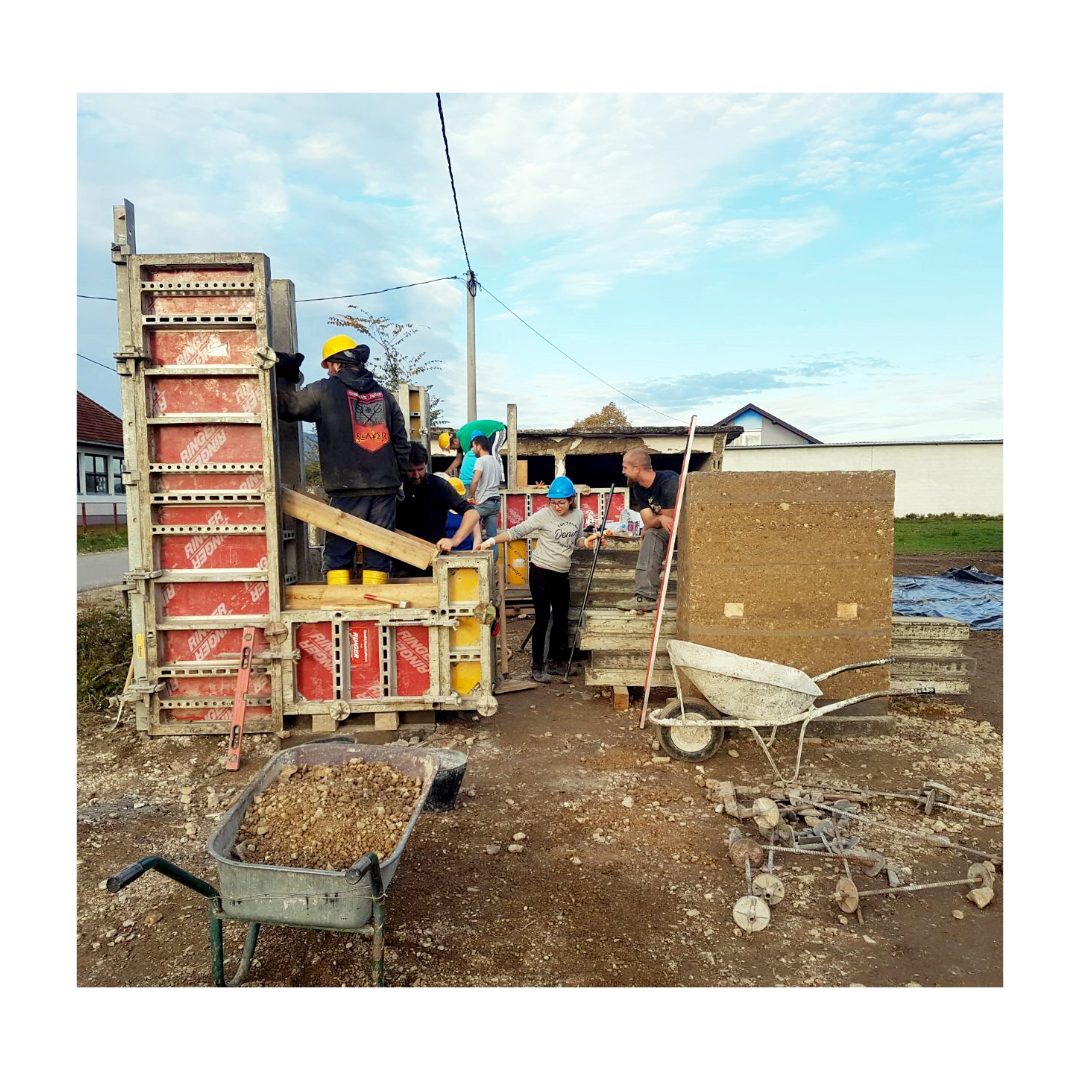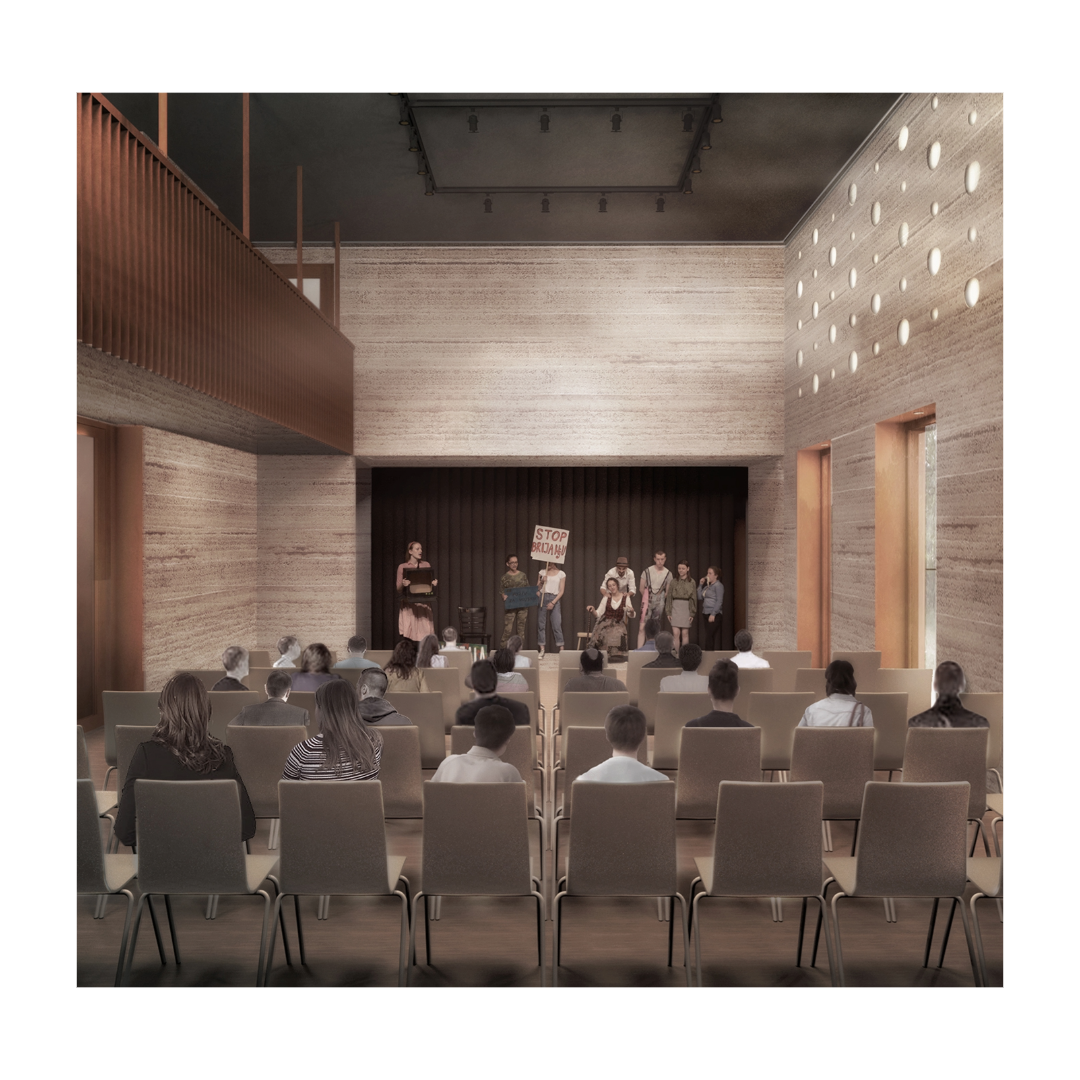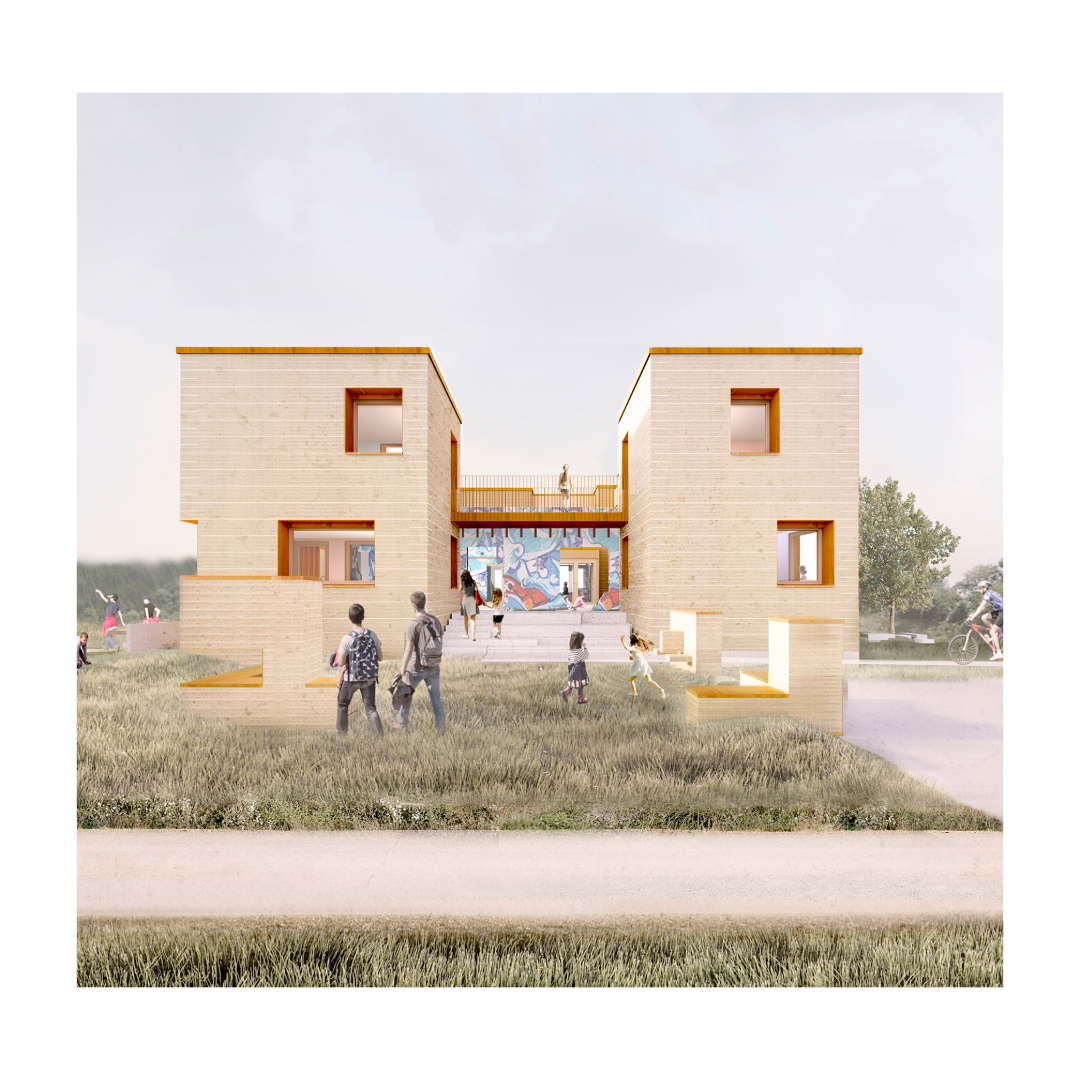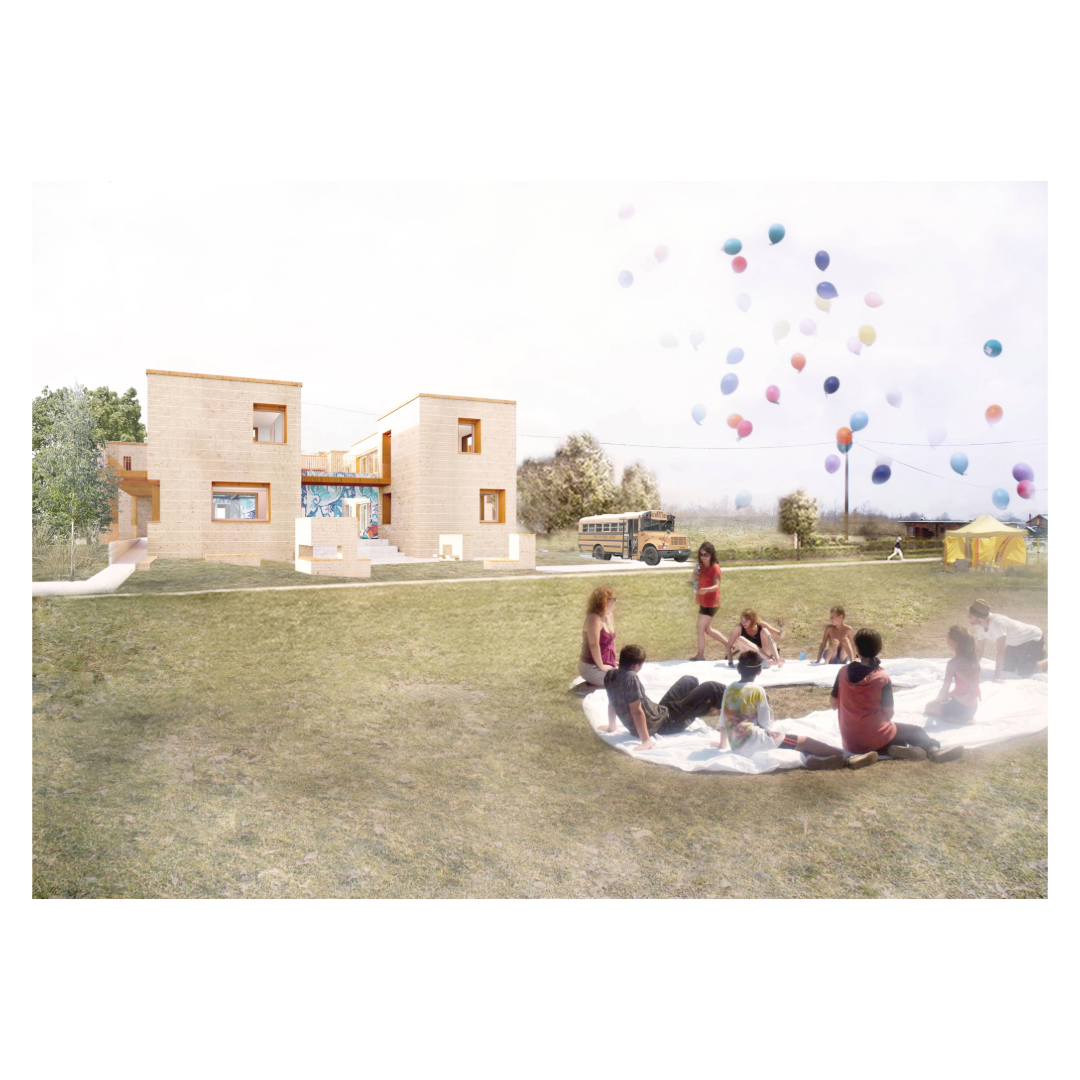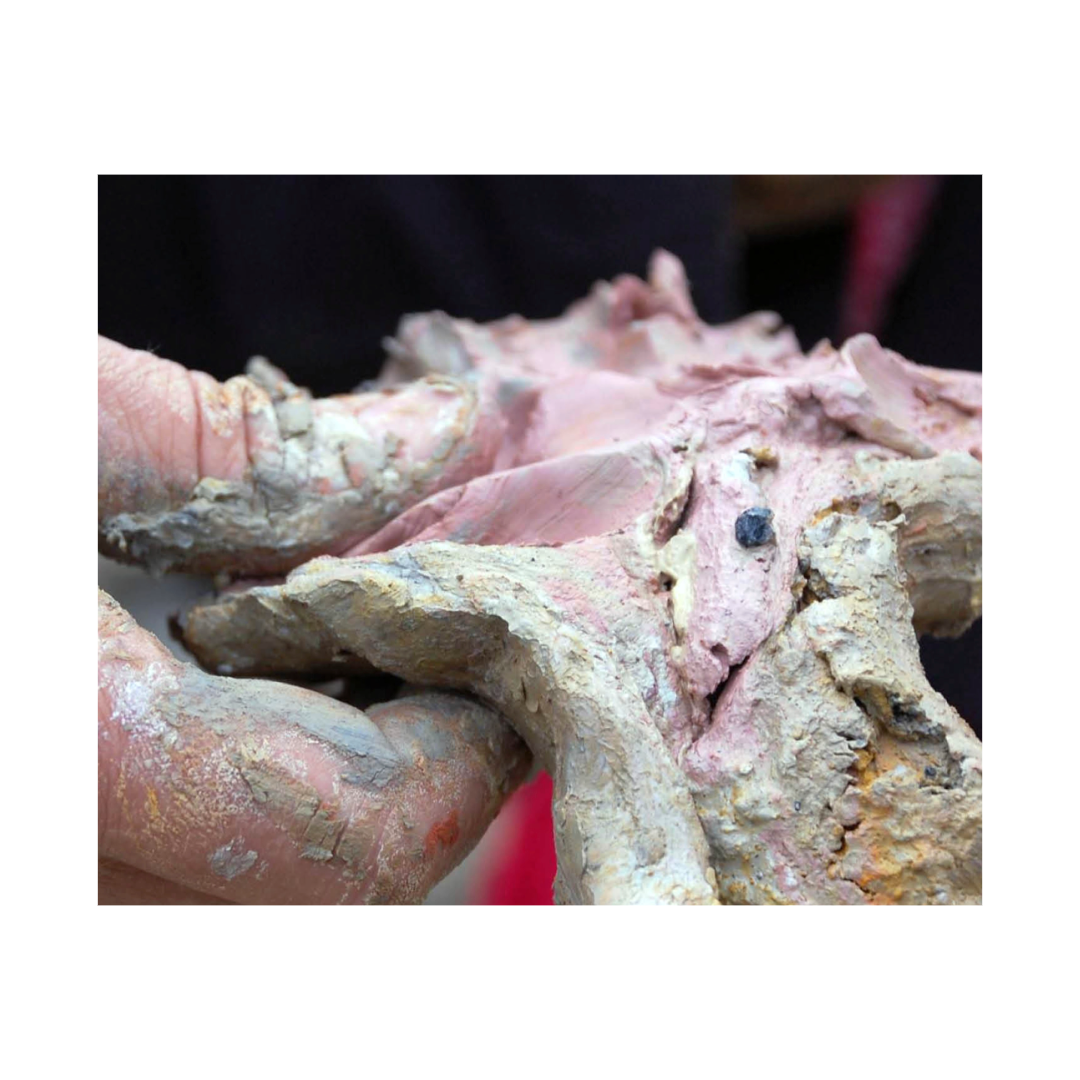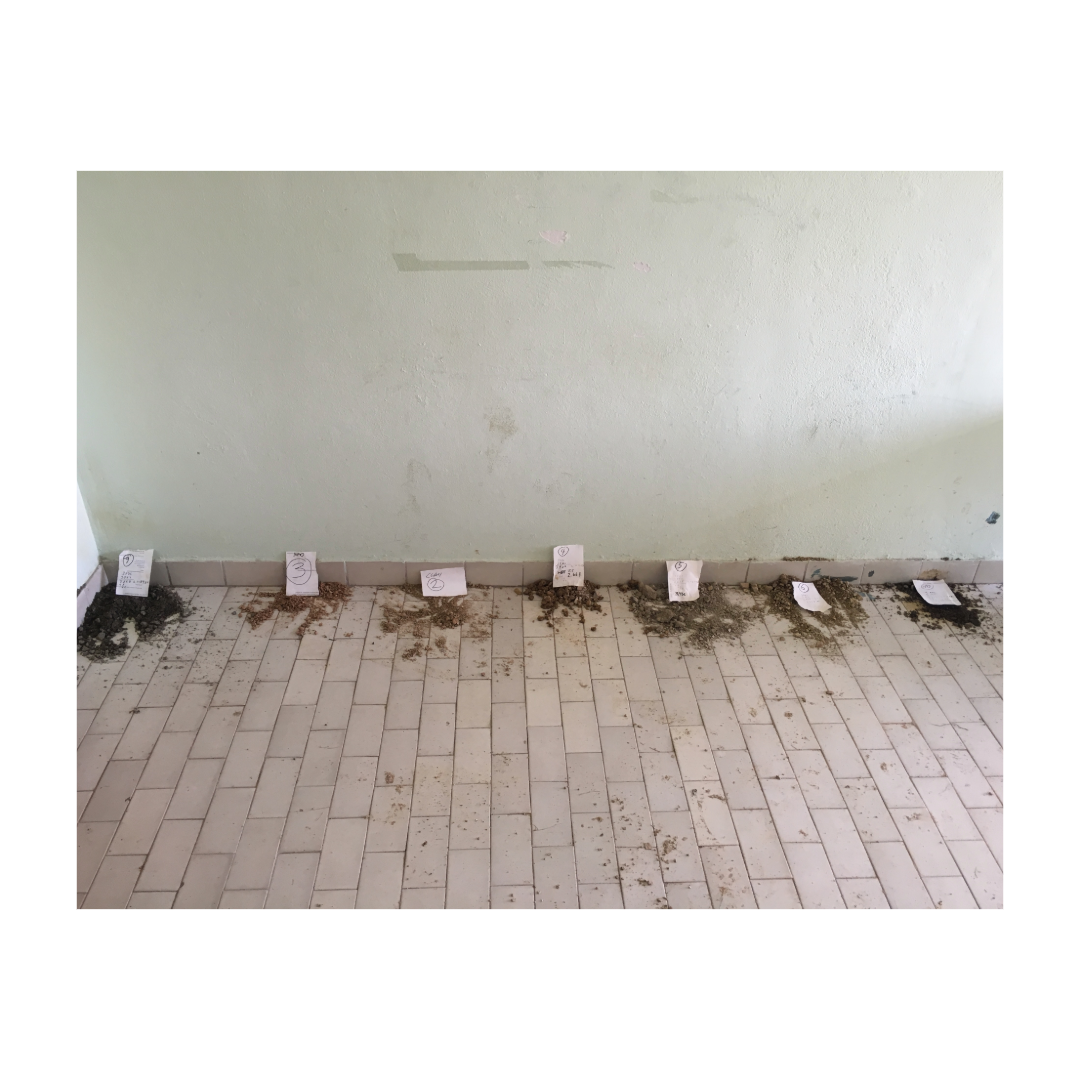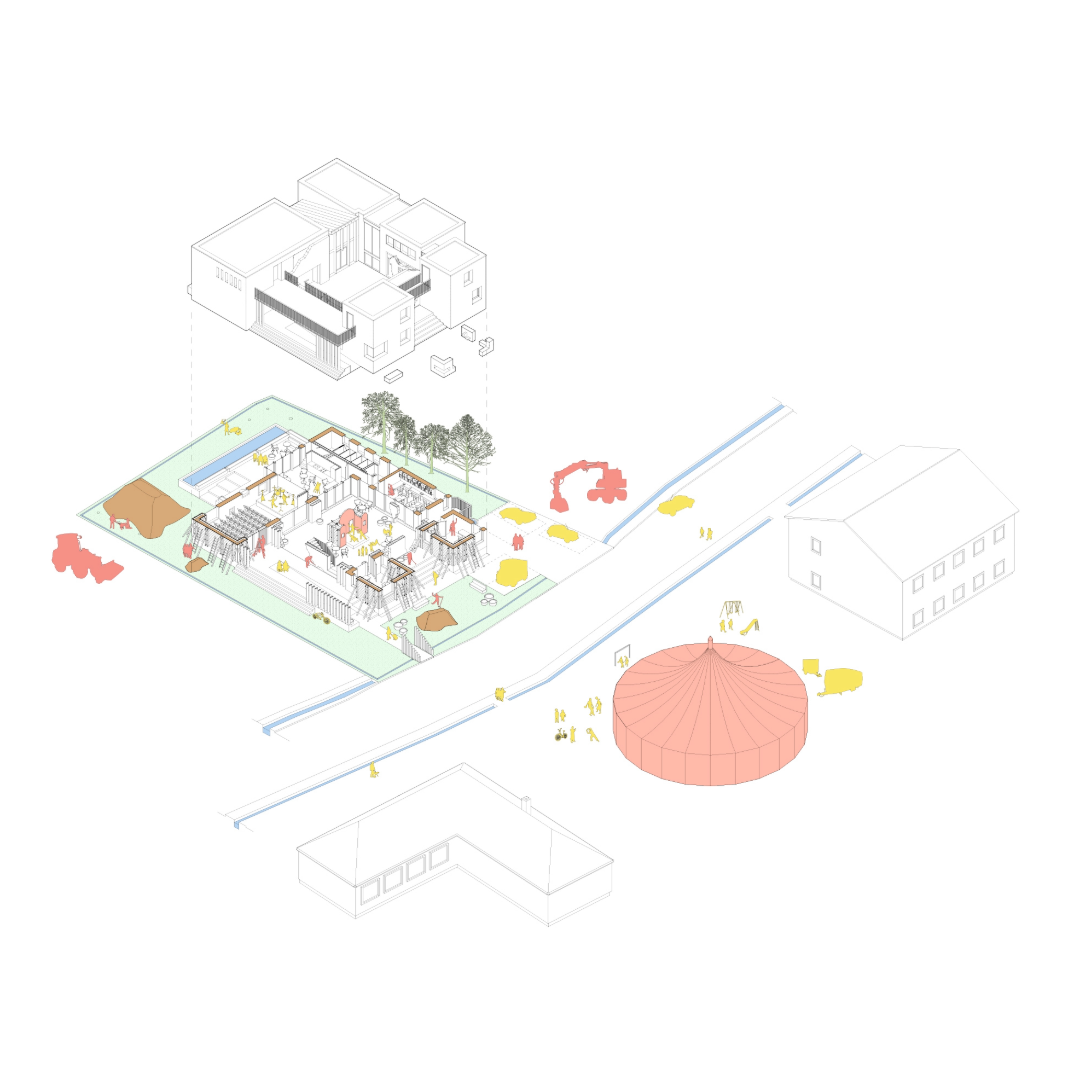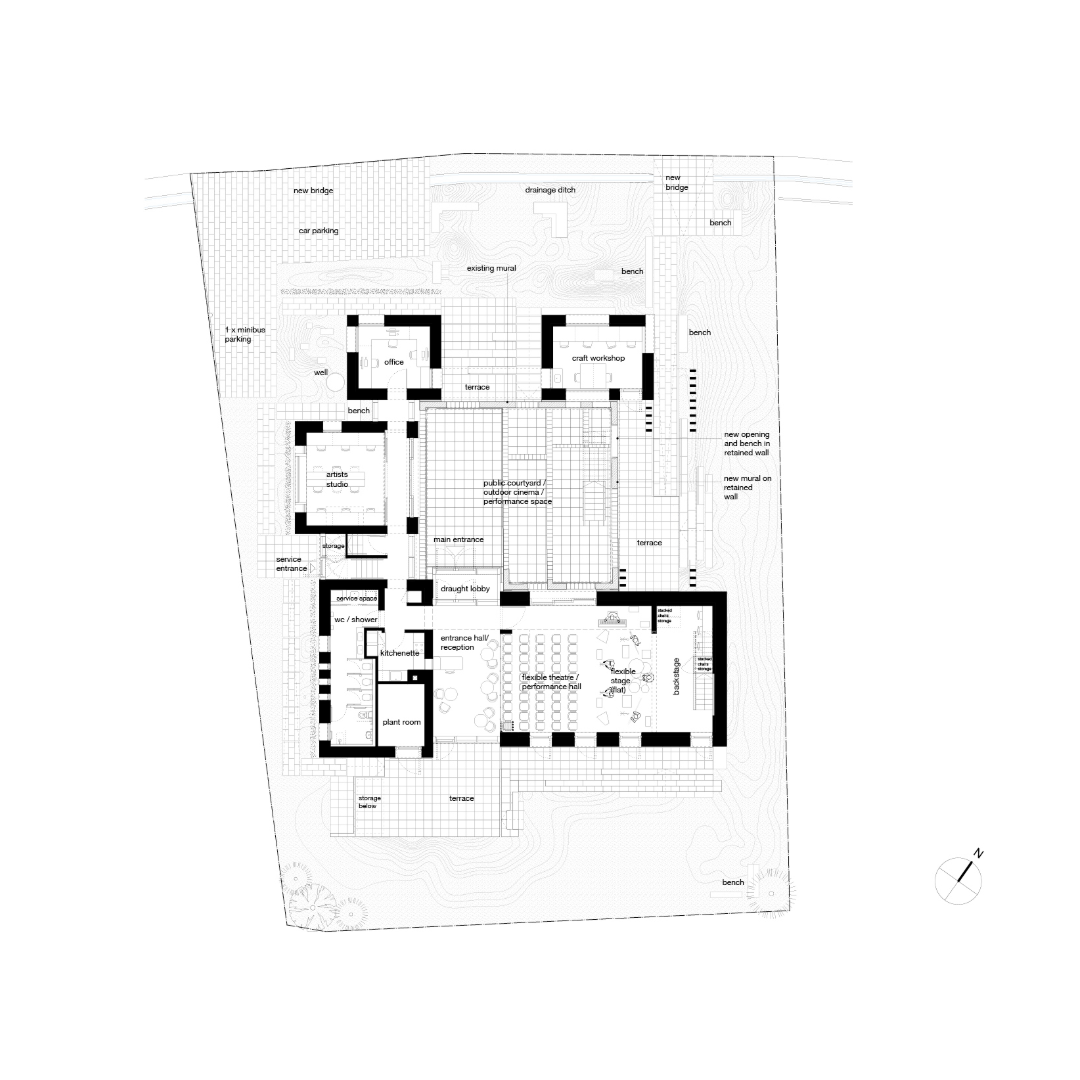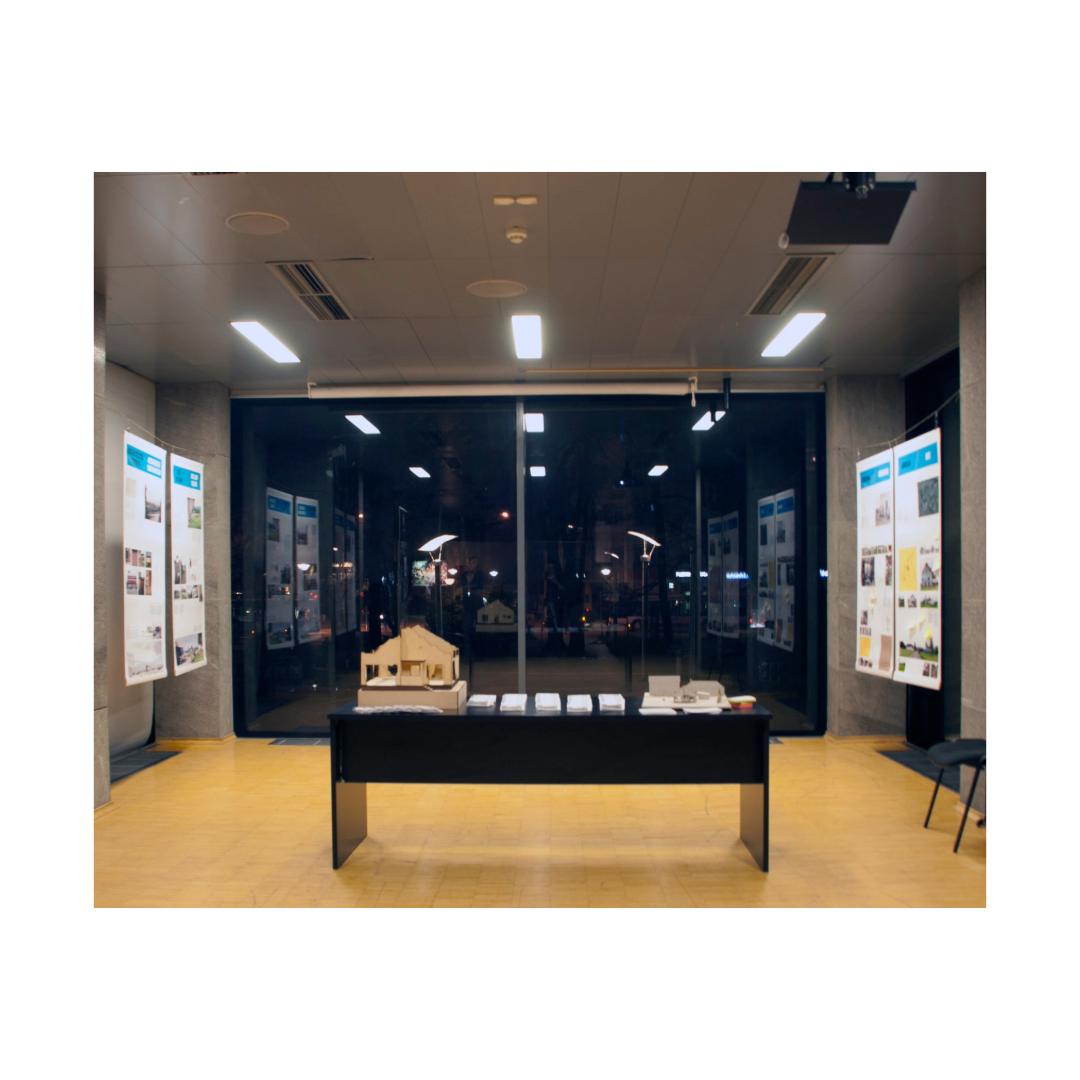Winner of the Lafarge Holcim Award for Sustainable Construction European Silver 2021
-
Winner of the Lafarge Holcim Award for Sustainable Construction European Silver 2021 -
Photo: Most Mira/ Adriana Keast
Most Mira Peace Centre
The rammed earth Most Mira Peace Centre is a beacon of peace and sustainability in the Balkans, which transforms a war-ruined house into a vibrant public destination for arts and reconciliation activities, for charity "Most Mira" in Prijedor, BiH. The site sits between two divided villages: Petrov Gaj (Bosnian Serb village) and Kevljani (Bosniak village), near the former Omarska Concentration Camp. Since 2009, Most Mira have brought over a thousand young people and volunteers of all ethnicities to this site, though festivals and regular arts, theatre and peace-building programmes. The centre will give Most Mira a permanent home to run year-round activities.
The site carries the memory from the recent war, while a colourful north mural on the existing facade represents more recent youth arts activities organised by Most Mira, which combined with the success of the charities drama program and numerous public consultations with students and the local community inspired us to keep parts of the ruin as a 'canvas' for changeable stage settings. Newly built individual pavilion like building structures built from rammed earth group around the adapted ruin as if engaged in a conversation, transforming the formerly private house into a public courtyard and outdoor theatre. Rooms spiral off the central courtyard, including a flexible theatre, arts studio, craft workshop and dormitory’s for visitors.
The project includes the design of a holistic participatory architectural process, a series of local participatiory workshops and consultations used as an integral part of the design process, which enables Most Mira to respond to the needs and conditions of the community and future users and in large part informs the design and form of the Centre.
The Rammed Earth Technology combines the common modern process of forming walls using formwork with the traditional earth building material, to revitalise similar forgotten traditional ways of building and to transform them into something current and relevant in the contemporary context. The benefits of this method also include low carbon emissions, low cost of raw materials, good thermal mass, while also promoting an honest way of using and celebrating the use of earth as both structure and facade.
The intended building and process represent the process of transition towards reconciliation. The project is a transferable model for reconciliation for other post-war sites in the region, with aims for this Peace Centre to become part of a nation-wide development framework.
TYPE \ Architecture, Commission YEAR \ 2015, ongoing LOCATION \ Kevljani, Prijedor, Bosnia and Herzegovina STATUS \ Planning submission, ongoing COLLABORATORS \ Kemal Pervanic, Lucy Dinnen, Tim Coles, Melika Konjicanin CONSULTANTS\ Martin Rauch, Lehm Ton Erde, Thomas Honermann (Rammed Earth Specialists), T&E (Structural Engineering), Polyplan (Mechanical), Electra (Electrical), HP Projekt (Hydro), Blok Projekt (planning consultant), Urbis Centar (planning review), Igor Vujic (Energy Efficiency), V&Z Zastita (Fire Engineer) CLIENT\ Most Mira WORKSHOP PARTICIPANTS \ Nadja Kunic, Adriana Keast, Nikola Vojnovic, Rada Latinovic, Admir Islamcevic, Nemanja Cado, Kirsteen Tait, Leonar Stieger, Anna-Pia-Rauch, Kunic Gradnja, Malina Cvoro, Drazen Crnomat, DajanaPapaz, Emina Cickusic, Emina Osivcic, Kenan Muslic, Milica Boric, Nedzla Seferovic, Zivko Vasiljevic, Zoran Uljarevic, Ben Moore, Vedad Islambegovic, Ibrica Jasarevic, Asmir Mutevelic, Sabina Filipovic, Deniz Mahmutovic, Nikola Ostojic, Harun Sabljakovic
Photos: Most Mira








